Abstract
The present article reviews current knowledge on the epidemiology, pathophysiology, and treatment of snake bite, with particular reference to the situation in developing countries. There is little reliable information on the incidence of snake bite in many parts of the world, and epidemiological studies are needed, using enzyme-linked immunosorbent assay to identify and quantify serum levels of venom antigen and antibody. The pathophysiology and clinical features of envenoming by medically important snakes are discussed. Antivenom, if used correctly, can reverse systemic poisoning even if given days after the bite. It is therefore wise to wait for the appearance of signs of systemic poisoning before administering antivenom, rather than using it routinely. WHO has designated the Liverpool School of Tropical Medicine as a Collaborating Centre for the Control of Antivenoms, and this Centre now holds a collection of reference venoms from several important snake species. Characterization of these and of standard antivenoms should significantly improve the management of snake bite throughout the world.
Full text
PDF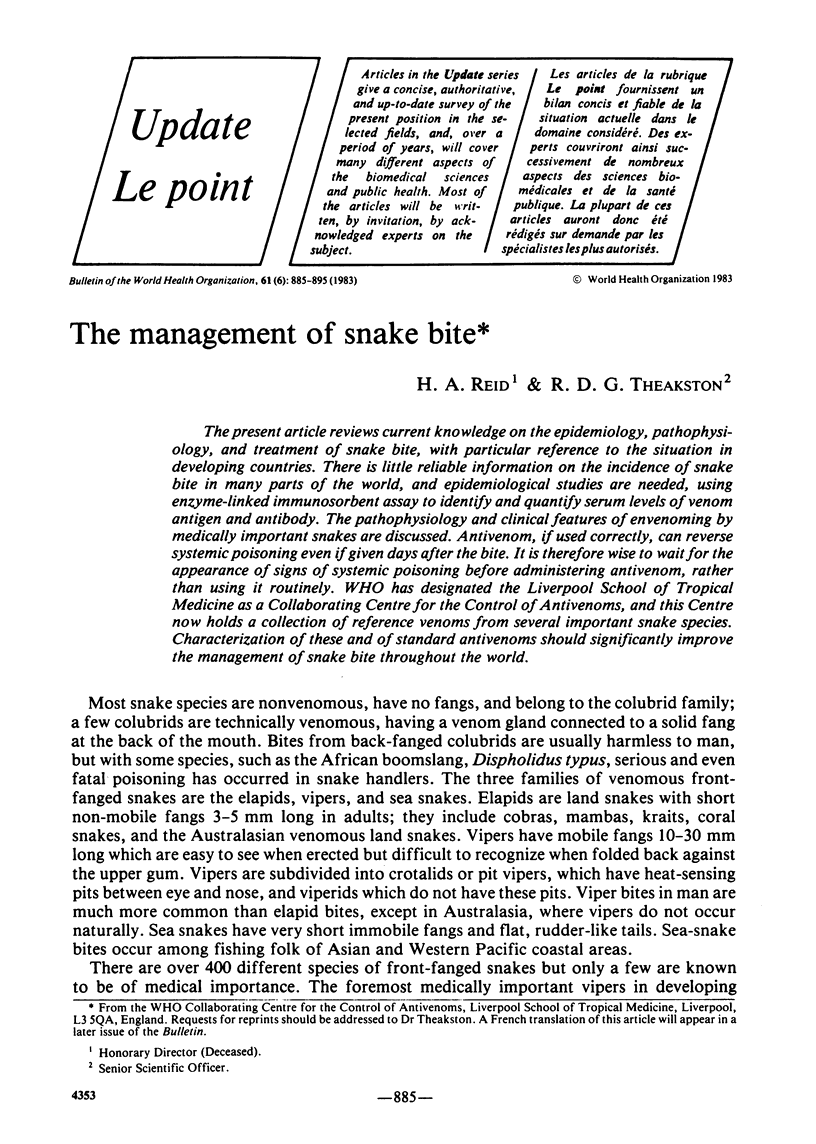
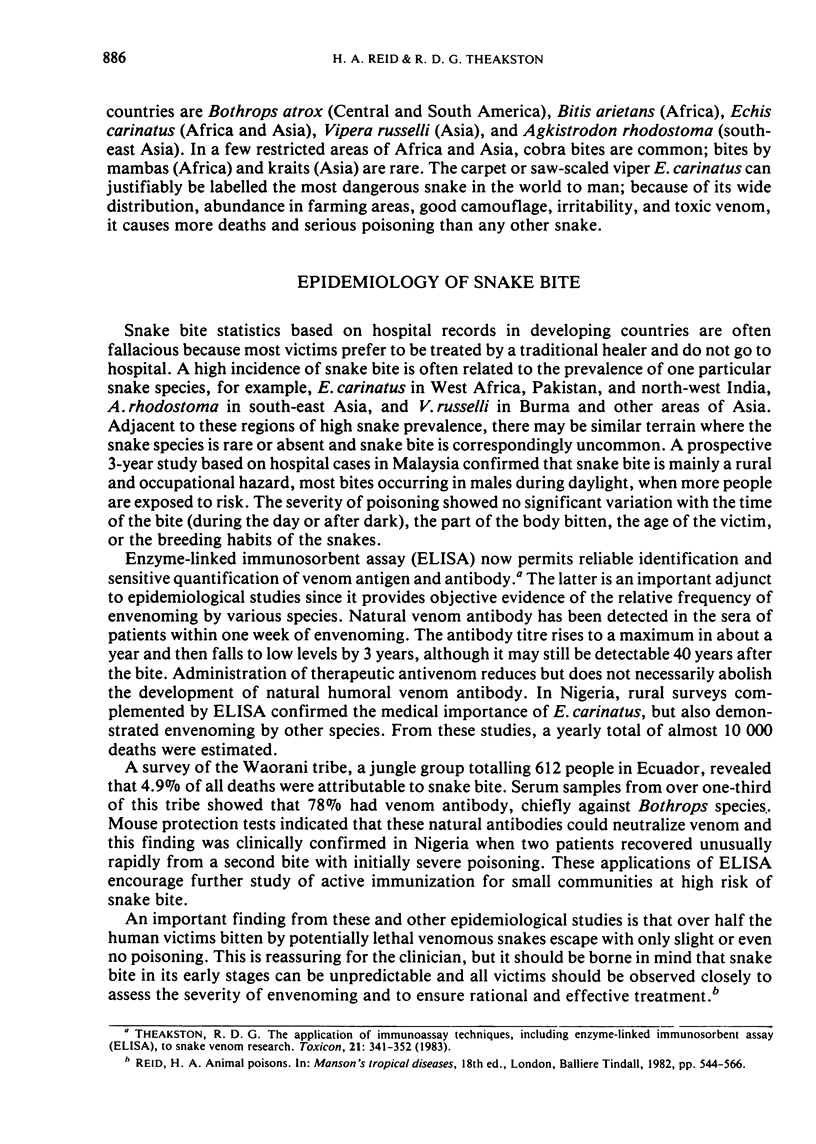
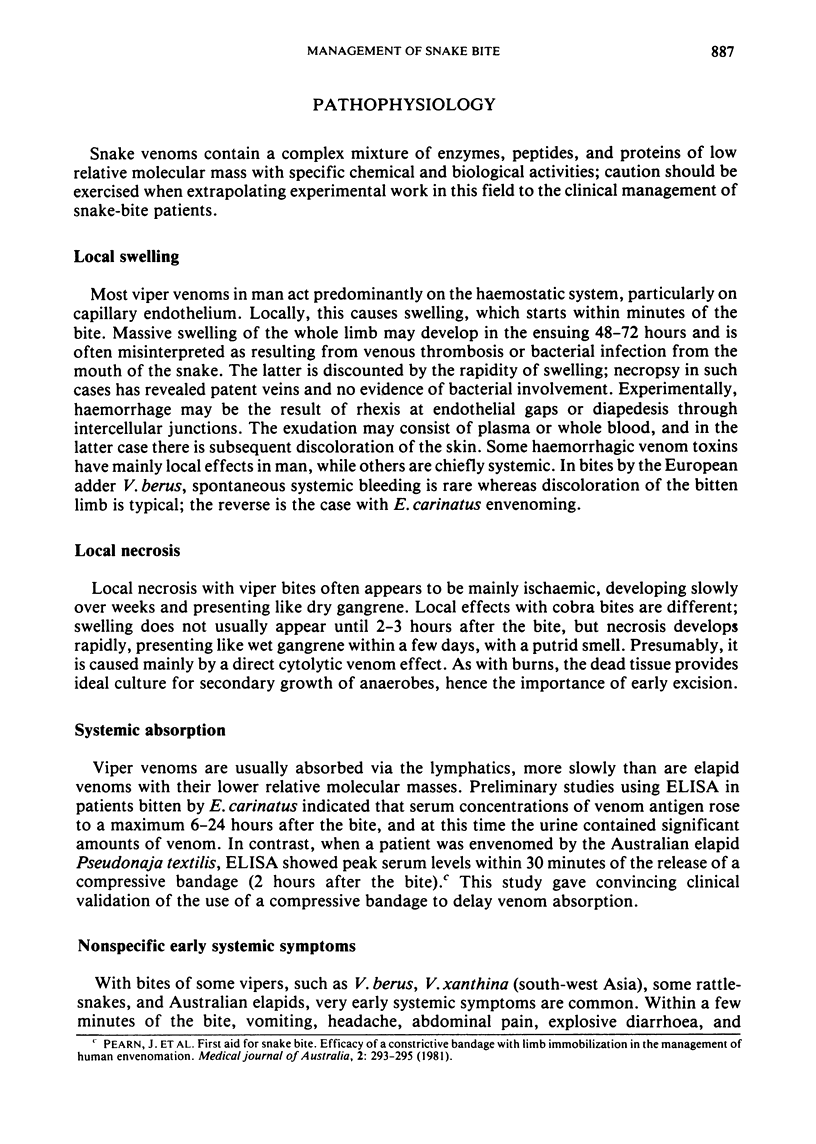
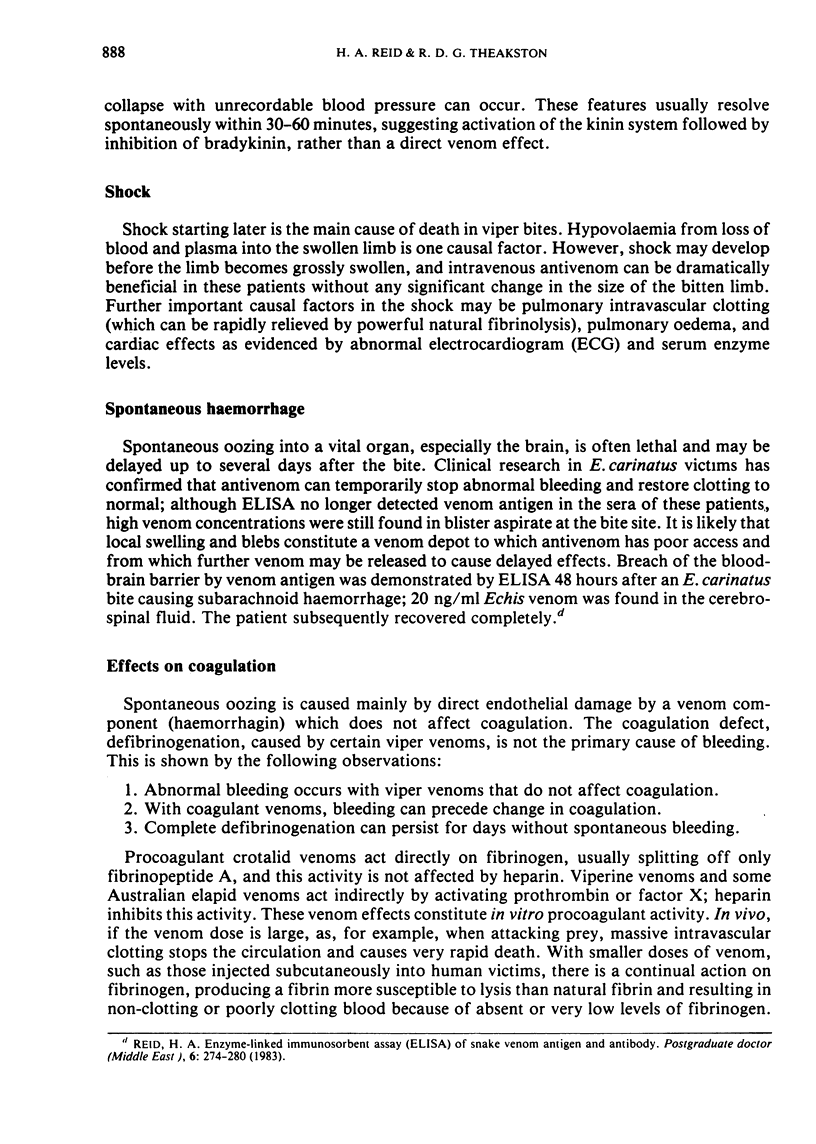
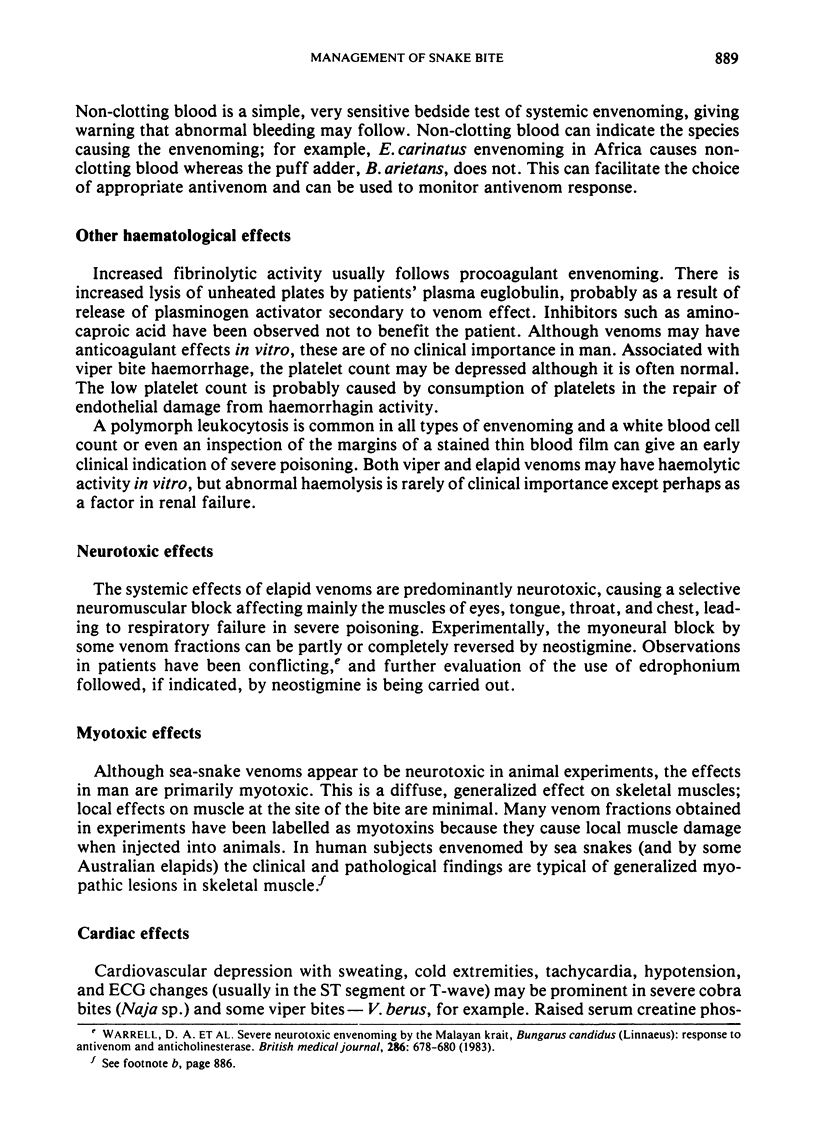
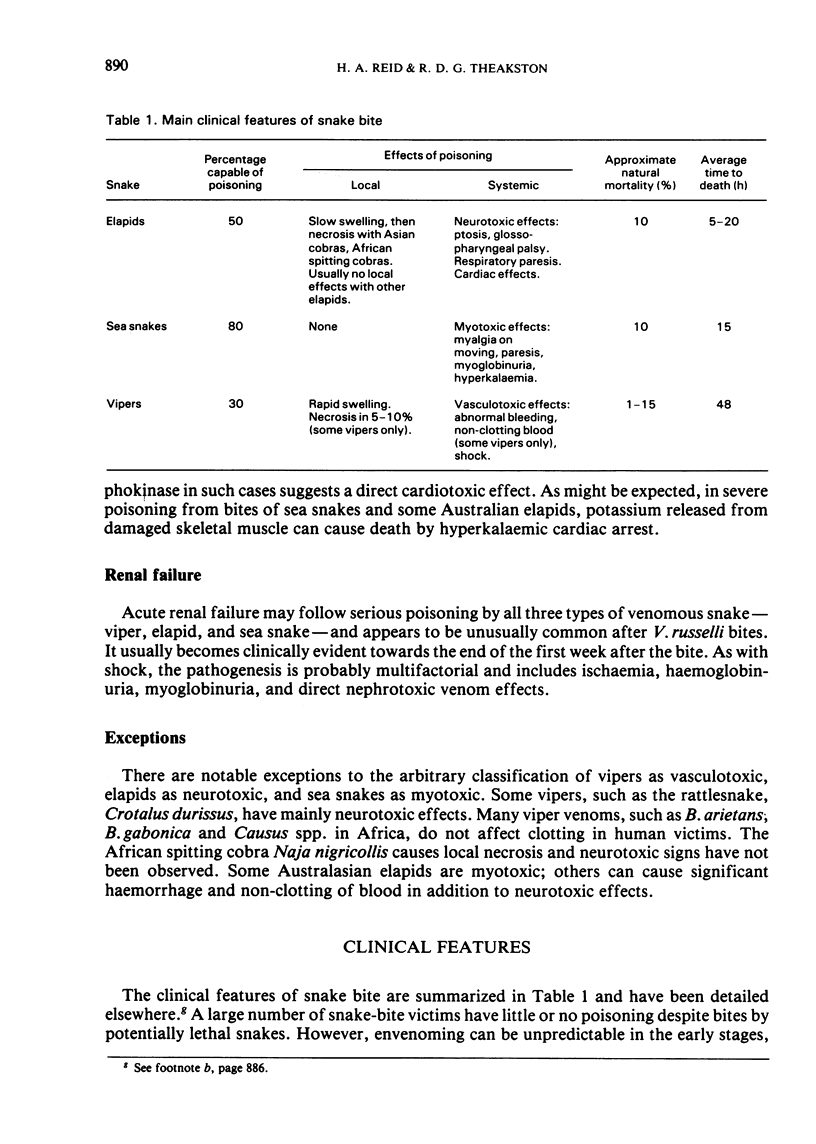
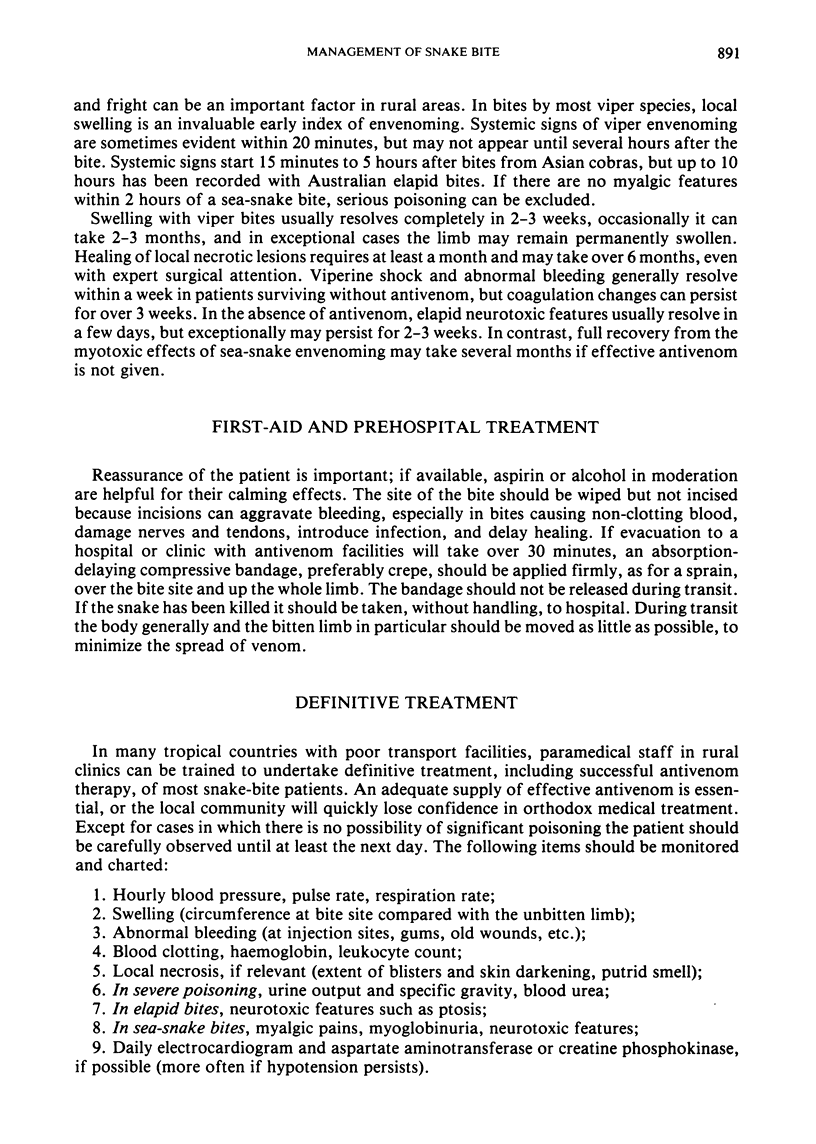
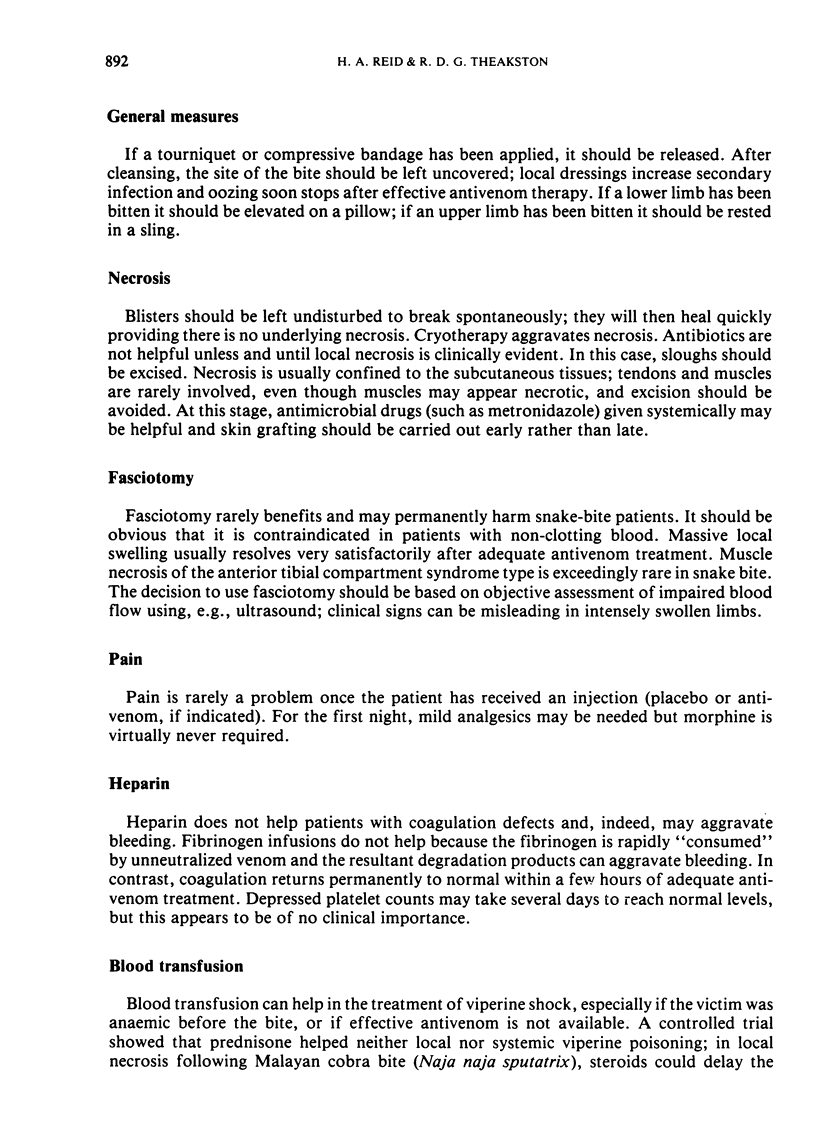
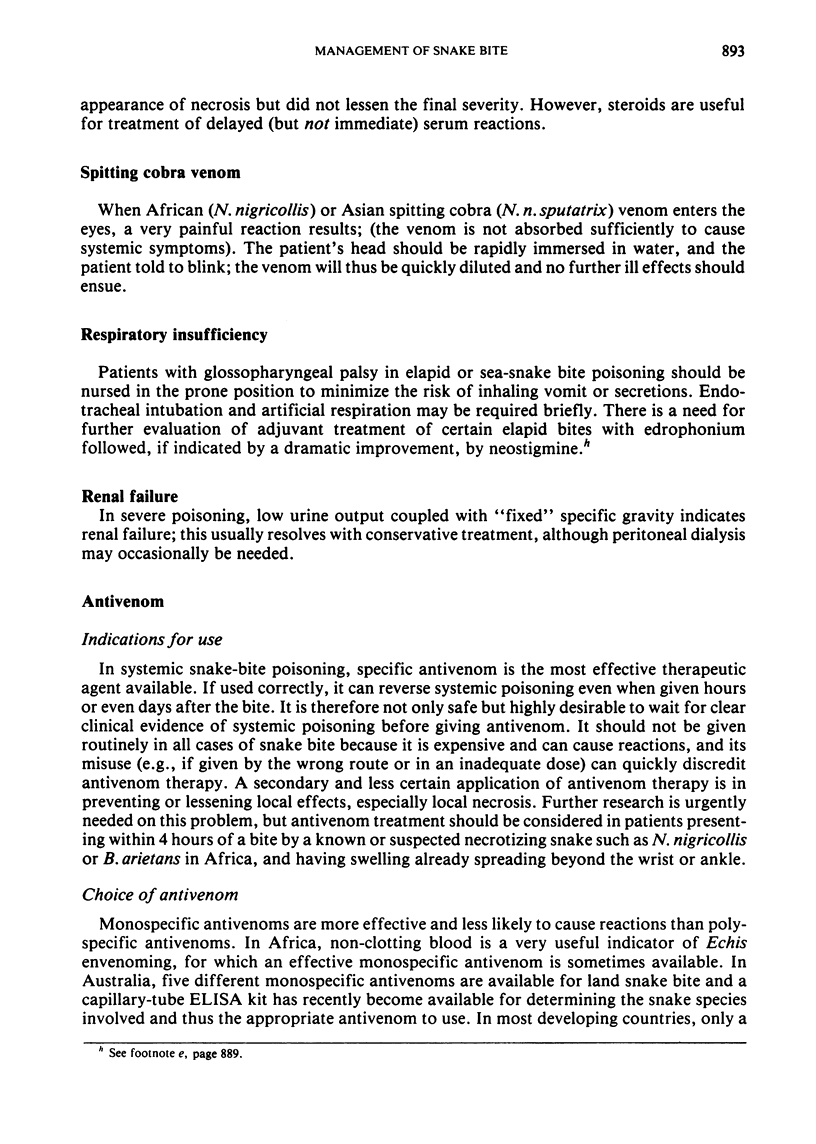
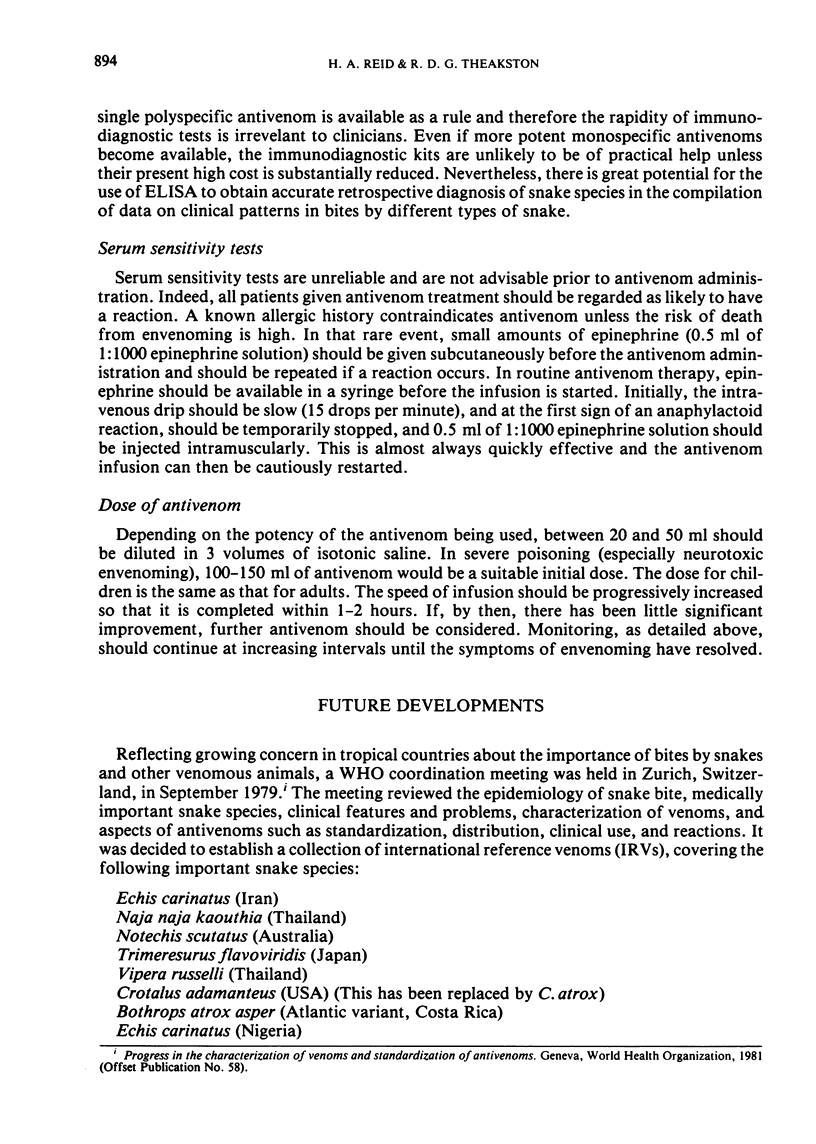
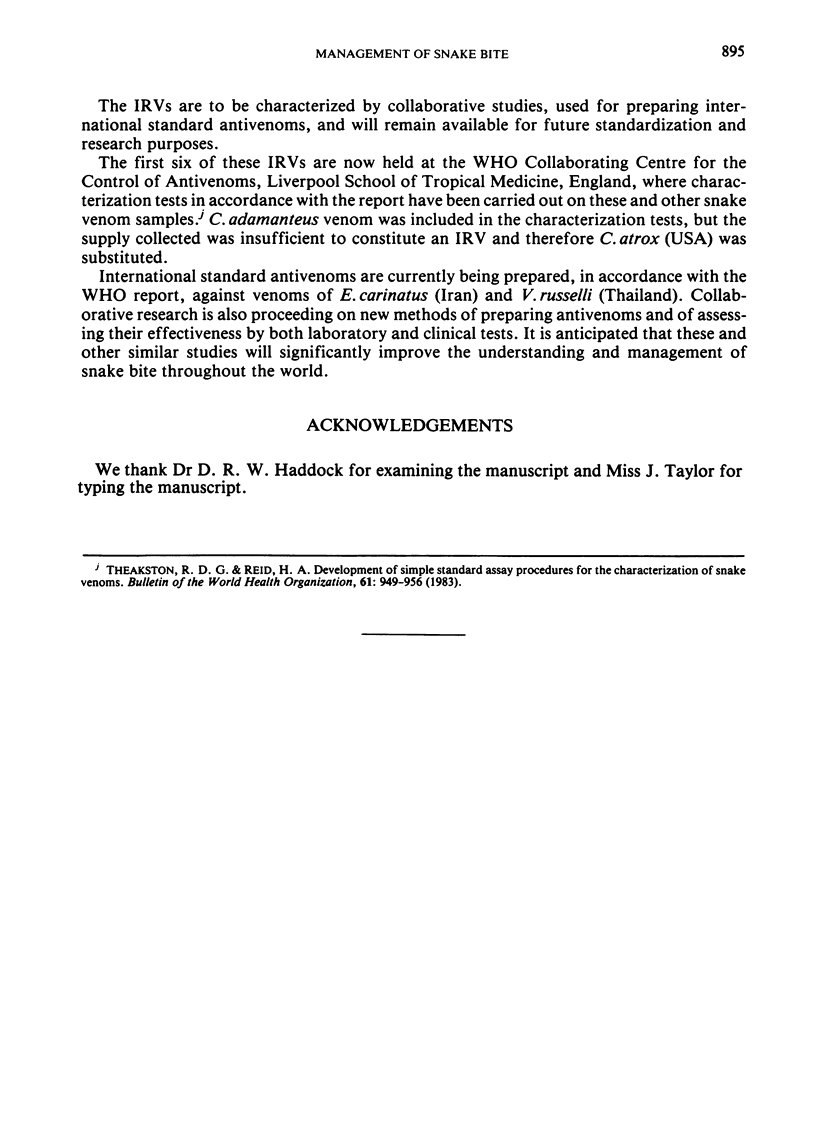
Selected References
These references are in PubMed. This may not be the complete list of references from this article.
- Theakston R. D., Reid H. A. Development of simple standard assay procedures for the characterization of snake venom. Bull World Health Organ. 1983;61(6):949–956. [PMC free article] [PubMed] [Google Scholar]
- Warrell D. A., Looareesuwan S., White N. J., Theakston R. D., Warrell M. J., Kosakarn W., Reid H. A. Severe neurotoxic envenoming by the Malayan krait Bungarus candidus (Linnaeus): response to antivenom and anticholinesterase. Br Med J (Clin Res Ed) 1983 Feb 26;286(6366):678–680. doi: 10.1136/bmj.286.6366.678. [DOI] [PMC free article] [PubMed] [Google Scholar]


